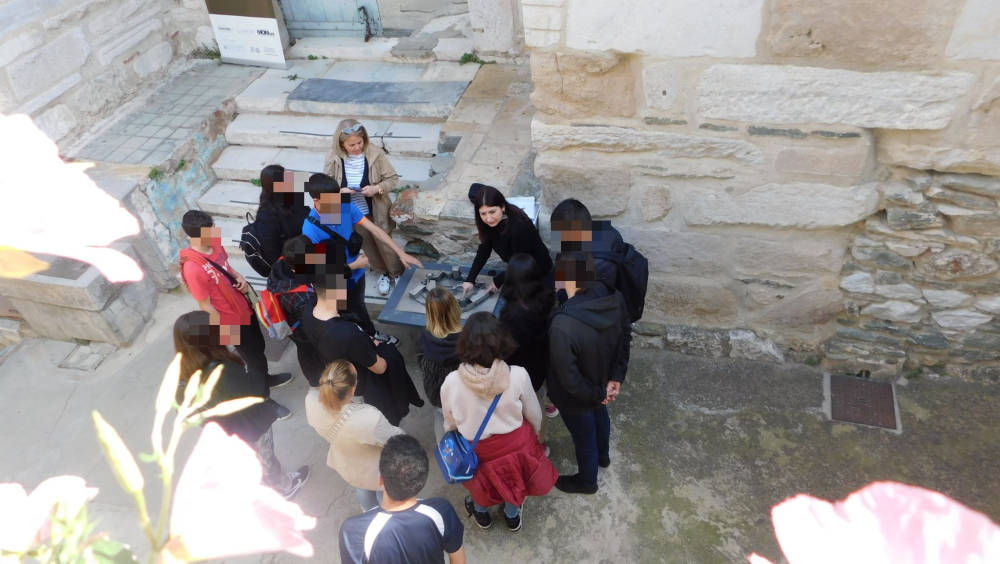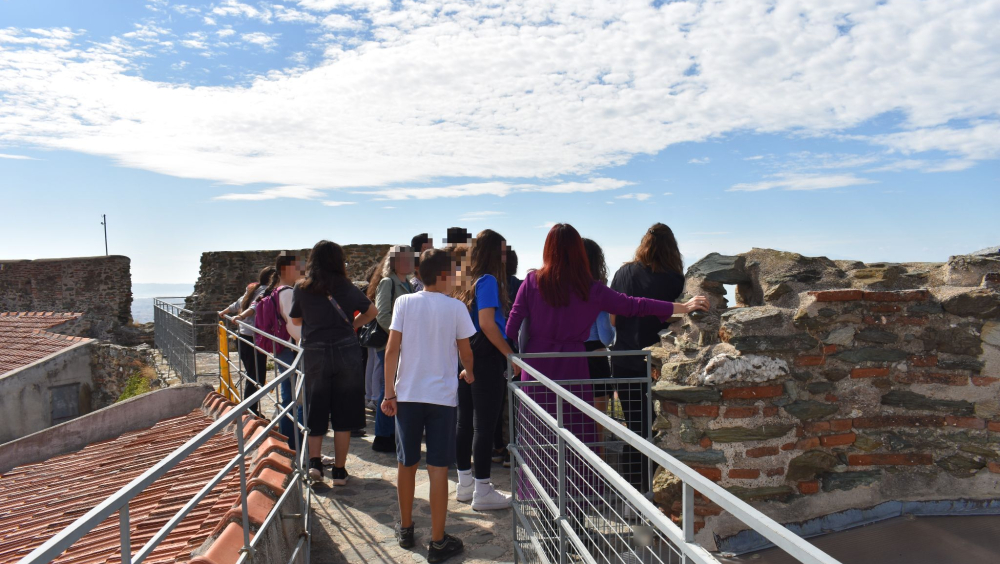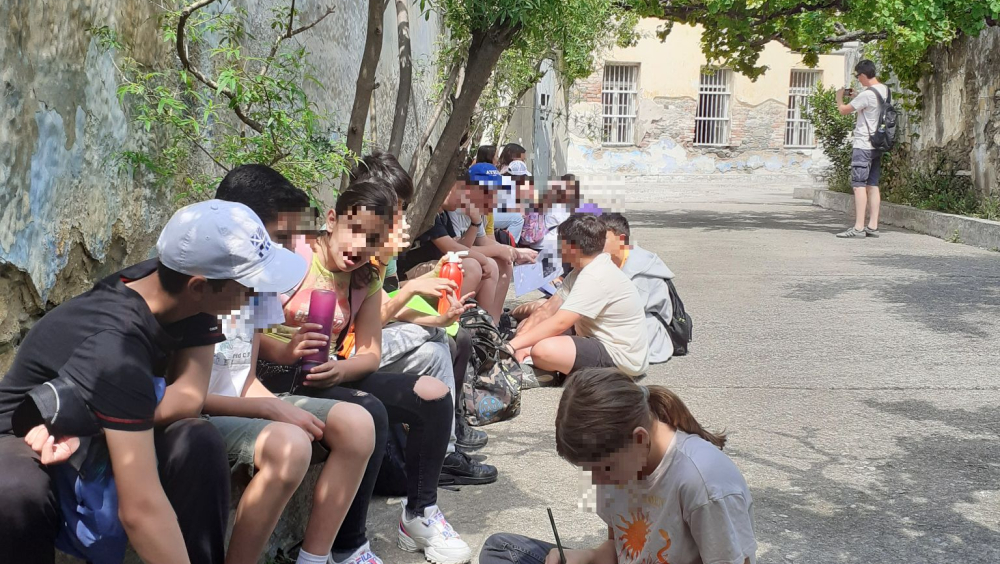The fortress of Heptapyrgion in Thessaloniki. Intercommunicating European Cultural Heritage to the local community and young people.
The fortress of Heptapyrgion is one of the best well-preserved fortification monuments in Greece, a symbol of the power of the city of Thessaloniki, but also a site with a heavy historical impact due to its use as a prison in recent years. Nowadays Heptapyrgion is an accessible site in which the Ephorate of Antiquities of the City of Thessaloniki implements a wide range of communication and educational activities and realizes collaborations with various institutions providing opportunities for participation and learning, highlighting at the same time the European dimension of the monument, as well as the European values of freedom.
The fortress of Heptapyrgion is located in the northeastern end of Thessaloniki and consists an important landmark of the city. It is one of the best well-preserved fortification monuments in Greece, a symbol of the power of the city of Thessaloniki, but also a site with a heavy historical impact due to its use as a prison in recent years.
Heptapyrgion is a closed polygonal fortress consisting of ten towers, triangular and quadrilateral, and their inter-tower spaces. Its northern side coincides with the pre-existing northernmost edge of the acropolis walls, while a strong semicircular enclosure was probably added to the south in late Byzantine period. The construction of the fortress has various phases, due to its multiple repairs and its long-term use. The fortress is decorated with arches, arched openings, toothed simple and elaborate ceramic ornaments in various motifs. Marble architectural members and reliefs are originated to the Roman, Early Christian and Byzantine buildings of the city and are reused. This practice adds visual interest and the same time recalls the continuous use of the fortress. The main entrance to the fortress is opened to the central tower of the south side. After the conquest of the city by the Ottomans, large-scale interventions and reconstructions were carried out. In memory of these works, a marble Ottoman inscription is embedded in the main entrance, mentioning Tsaous Bey as the founder, in the year 1431.
In 1591, the garrison commander with a force of 300 men had Eptapyrgion as his quarters. According to the Ottoman traveler Evliya Celebi, who reads an inscription that is no longer preserved, the fortress was repaired in 1646. In 1732, a document which records the long guns and ammunition of the walls of Thessaloniki, provides us with references to the towers of Heptapyrgion. Subsequently, the fortress lost its defensive character, was gradually abandoned and turned into a prison, probably at the end of the 19th century, according to a map of the area from 1899. The use of Heptapyrgion as prison led to the construction of new buildings both inside its perimeter and outside of it.
From now on, the history of Heptapyrgion is identified with the history of prisons (Yedi Kule). From freedom’s defensive barrier, is transformed into a place of confinement. Heptapyrgion, as a place of imprisonment, torture and executions, is associated with dark periods in the modern political history of the Greek State. It has been immortalized in the work of poets and writers, while stories of the prison are captured in numerous songs. Although the prison was transferred out of the city in July 1989, the monument continues to be associated with this dark legacy in the city's collective memory.
In 1989, the Fortress, together with the surrounding space, passed from the Ministry of Justice to the jurisdiction of the Ministry of Culture. Subsequently, the competent Ephorate of Byzantine Antiquities of Thessaloniki carried out the necessary research and implemented restoration and enhancement works concerning the monument.
Nowadays Heptapyrgion is an accessible site in which the Ephorate of Antiquities of the City of Thessaloniki implements a wide range of communication and educational activities and realizes collaborations with various institutions, aiming to connect cultural heritage with knowledge, entertainment and creativity as well as to develop close ties with the local community. Events include art exhibitions and installations, concerts, theatrical performances, workshops, and festivals. The monument also hosts the educational program "Heptapyrgion: a journey through time" for young people and children, providing opportunities to explore cultural heritage as a tool for education and personal growth. The aim of the program is to gain knowledge through enjoyable and creative activities related to the fortification of Thessaloniki, to approach the Heptapyrgion and its uses from the Byzantine period to the modern era, to experience the difficult heritage of the monument as a prison, while the participants interact with each other and think creatively.
Heptapyrgion is included in the UNESCO World Heritage List as part of the fortifications of Thessaloniki and also represent along with the Paleochristian and Byzantine monuments of Thessaloniki a significant aspect of the European cultural history. The educational and cultural activities held at Heptapyrgion attract the interest of numerous visitors providing opportunities for participation learning and inspiration, highlighting at the same time the European dimension of the monument, as well as the European values of freedom, respect for human rights and dignity, values that had been violated in the past within this site.


